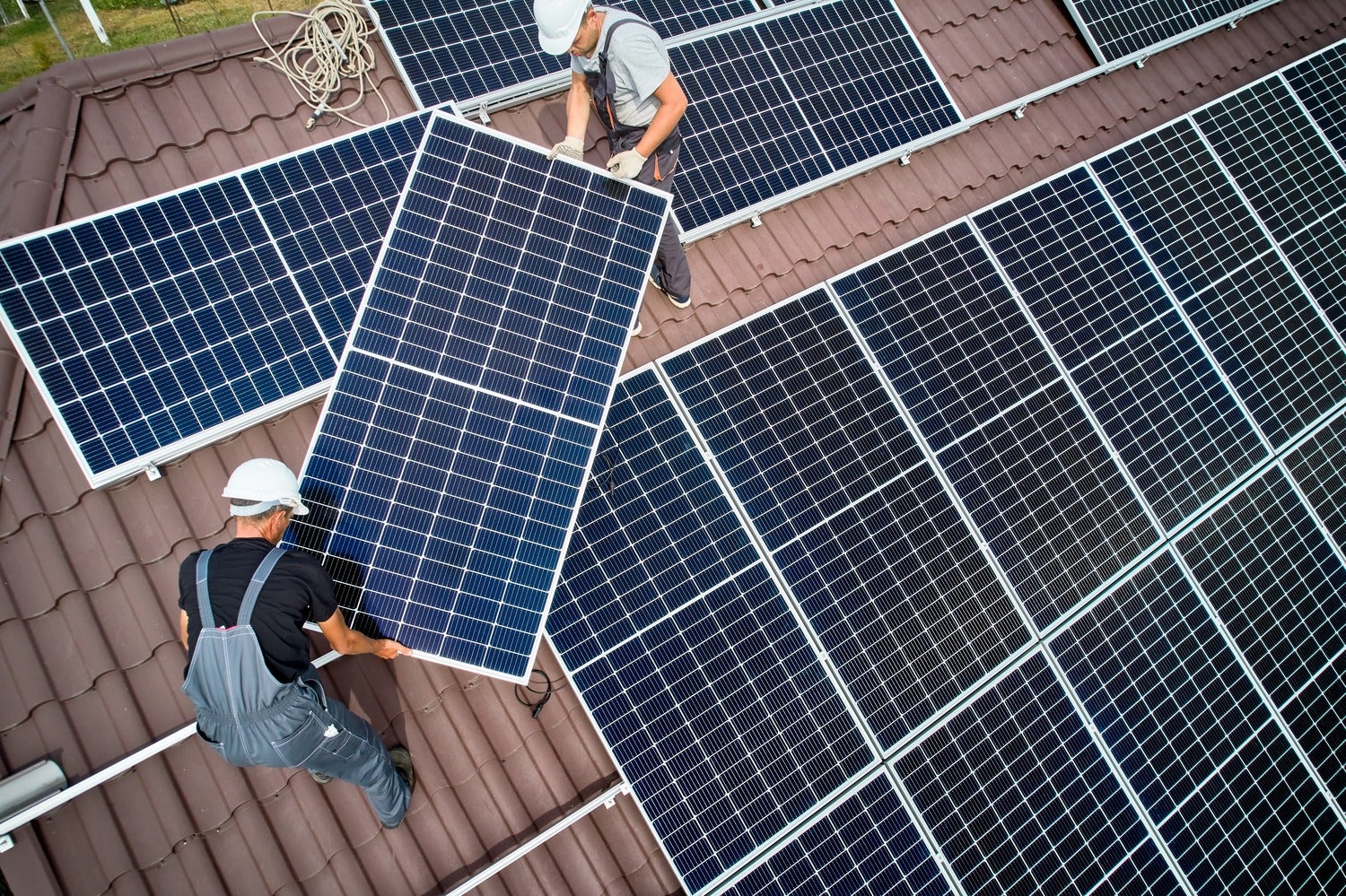Hey team, and welcome back to one5c! We have a pretty firm stance around here that the high shopping holiday season starts after Thanksgiving. Bottling up the joy of winter festivities hits different when it’s confined to a few precious weeks of merriment, and it’s also entirely possible to get all your yuletide traditions done in that time, too. Also—guess what? It can be more sustainable that way, too. We’ve got a complete slate of tips and tricks loaded up for you come December.
In the meantime, the name of the game is resisting the lure of twinkly lights and sales on things you probably don’t need. To help get you through it, we asked Tyler to dig into the psychology of Black Friday marketing—and how you can outsmart it. —Corinne
WHAT WE’RE INTO THIS WEEK
By Sara Kiley Watson

Study guide
The best place for solar panels
In a perfect world, we could just stick solar panels on the outside of everything and have unlimited power, but all surfaces are not created equal. We already know that many places don’t get enough sunlight on a day-to-day basis to make solar panels worthwhile, but a new study in Renewable and Sustainable Energy Reviews has refined our understanding of the specific conditions in which solar panels can be most efficient. Air temperature can cause efficiency to dip, and atmospheric conditions (think clouds, aerosols, pollutants, and dust) can reduce electricity output by up to 60%, especially in deserts. Snow, interestingly, is a mixed bag: Its reflectance can boost output, but accumulation can also block panels. The study authors say this data acts as a reminder that one-size-fits-all solutions simply don’t exist, and that installations need to be tailored for the place they are.
Consume this
Can you pass this climate quiz?
COP29 is already off to a rocky start. Climate experts have started to call out the annual U.N. meetings as useless for making genuine progress, and an exceptional number of lobbyists from polluting industries are in Azerbaijan. This year in particular these problems are tainting conversations about much-needed funding for adaptation and resiliency efforts in poorer (and more climate-affected) countries that have done little to fuel warming. But for those of us who aren’t exactly policy wonks, the whole ordeal can be incredibly confusing, which makes this quiz by Grist an informative and enlightening lesson in the complexities of climate finance. Follow a few questions to discover the nuances of who and what will be paid for in COP29’s most important funding objective—and maybe even confront some of your own biases.
Planet home
The world’s biggest piece of coral
It’s no secret that coral reefs are suffering immensely under climate change, so any good news about one of our planet’s most fascinating sea creatures is always welcome. A group of scientists and filmmakers studying the oceans around the Solomon Islands in the South Pacific have found the world’s largest individual coral reef colony, which could have been alive for the last 300 to 500 years and is the size of two basketball courts. The sheer scope of this colony is fascinating for scientists, but it is an opportune reminder about the benefits reefs provide for the entire planet. “This mega coral will help bring much-needed visibility and recognition from the government and other stakeholders,” Dennis Marita, a member of the Po’onapaina Tribe of Ulawa that oversees Malaulalo’s marine territory, told Vox. “This is really a gain for us.”
Good read
The recyclers no one saw
In many parts of the world, recycling systems just aren’t as organized as we’re used to. In fact, more than half of plastic waste ends up burned simply because there’s no better way to get rid of it. In some locales, though, networks of informal recyclers are picking up the slack. In her latest feature for The New York Times, reporter Genevieve Glatsky visits one such community. Bogotá, Colombia, has no government service for collecting recyclables, so some 26,000 workers handle the process. This labor normally goes unnoticed and unappreciated, but influencer Sara Samaniego, and her cheery character Marce the Recycler, is bringing the hard and necessary work of informal recyclers into the spotlight across Instagram, TikTok, and YouTube.
MIC-DROP CLIMATE STAT
37%
The portion of people drinking more alt-milk than dairy milk, according to a new report from the Plant Based Foods Institute and Kroger. That’s great news: Producing cow’s milk creates more than three times the greenhouse gas emissions of soy or oat milk.
Retail therapy
HOW TO AVOID A BLACK FRIDAY SPREE
By Tyler Santora

Black Friday attacks from many angles. Some people are genetically predisposed to being “deal-prone,” but many of the season’s marketing tactics can impact anyone. Perhaps most important is that deals create what’s called a scarcity mindset, says Andrew Ching, a professor of marketing and economics at Johns Hopkins University. Essentially, the urgency with which shops tout their discounts causes buyers to worry that they’ll regret not jumping on a bargain. “The Black Friday sales [are] only for one day (or a few days),” Ching says. “If you don’t take it now, this option will be gone.” This is, unsurprisingly, just a ploy at our wallets. There are sales year-round—most of which are equal to, if not better, than those on this shopping high holiday.
Then there’s the social aspect. Black Friday shopping has become a tradition among families and groups of friends, which can lead to social pressure to keep the party going. Not to mention the gamified aspect of bargain-hunting. “The fact that they need to make an effort (lining up) and then get a reward (the huge discount), makes this a fun game that they enjoy playing,” Ching says.
How to avoid the Black Friday black hole
Being aware of what can spur us to spend when we don’t need to can help us avoid falling into those traps. Here are some ways you can push back against the pressure:
Distract yourself. If you’re resolute not to go shopping, plan something that keeps you far away from the stores, like going to the movies or on a hike—if the weather permits.
Get your social fix another way. If you crave the social aspect of Black Friday shopping, plan something else to do with folks in your community. Board game parties or movie marathons are a great idea. There’s also Friendsgiving if a break from family time is in order.
Put down the phone. Avoid the allure (and triggering nature) of online deals by staying off social media and taking a break from email—it’s the holidays, after all!
Shop with a list. A deal is great if it’s on something you (or the person you’re shopping for) actually need. If you’re shopping for gifts, think about whether the receiver will actually use the item, or if you’re just rationalizing the purchase because it’s a good deal and you’re nervous it won’t be around forever.
Bring a friend. A buddy who’s stingier than you can be an excellent reality check. This person can help pull back your impulses by asking questions about the potential purchase, say, if it’s something that’d be easy to find secondhand.
